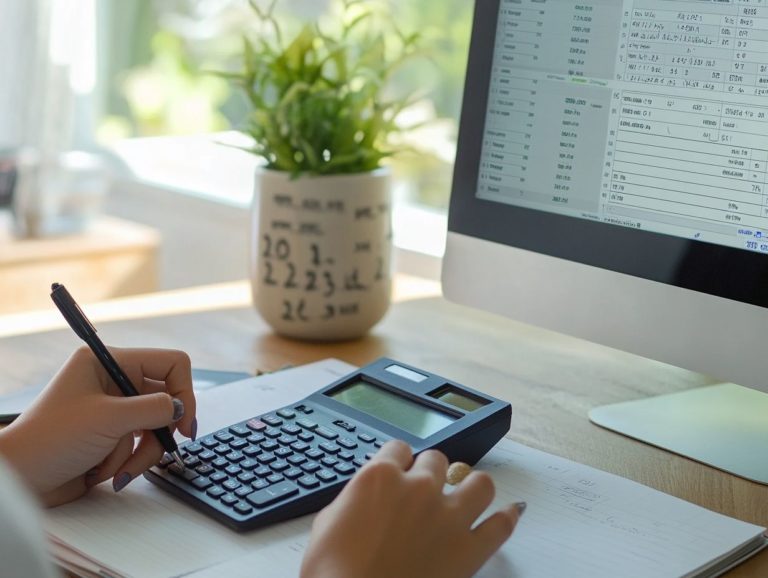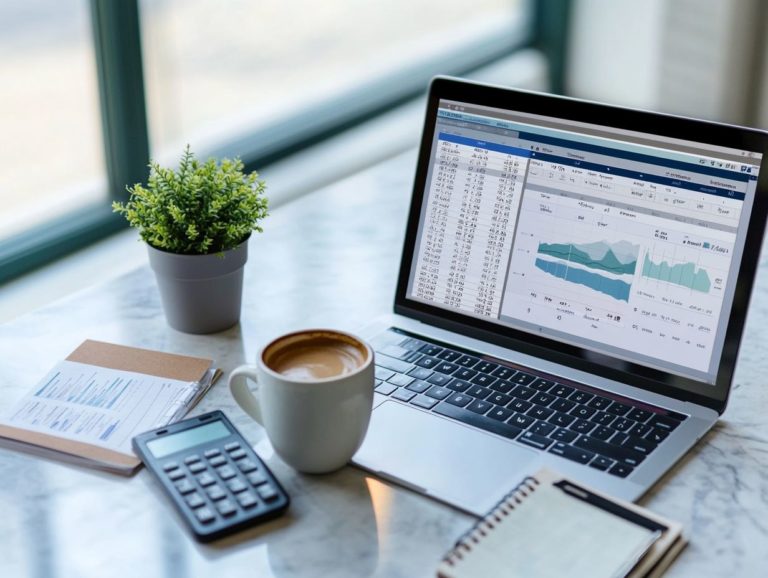How to Build an Emergency Income Fund
In today’s unpredictable financial landscape, building an emergency fund is crucial. This fund acts like a financial superhero, ready to help during tough times such as job loss or sudden expenses.
Discover the reasons you need an emergency fund, how to calculate the right amount to save, and effective strategies for both building and maintaining it, including budget planning techniques.
Whether you’re just beginning your financial journey or seeking to bolster your financial stability, this guide will empower you to navigate the process with confidence and clarity.
Contents
- Key Takeaways:
- The Importance of an Emergency Income Fund
- Determining How Much to Save
- Strategies for Building an Emergency Income Fund
- Maintaining and Using Your Emergency Income Fund
- Frequently Asked Questions
- What is an emergency fund and why is it important to have one?
- How much money should I have in my emergency fund?
- What are some tips for building an emergency income fund?
- Where should I keep my emergency income fund?
- When should I use my emergency income fund?
- What should I do if I have to use my emergency income fund?
Key Takeaways:
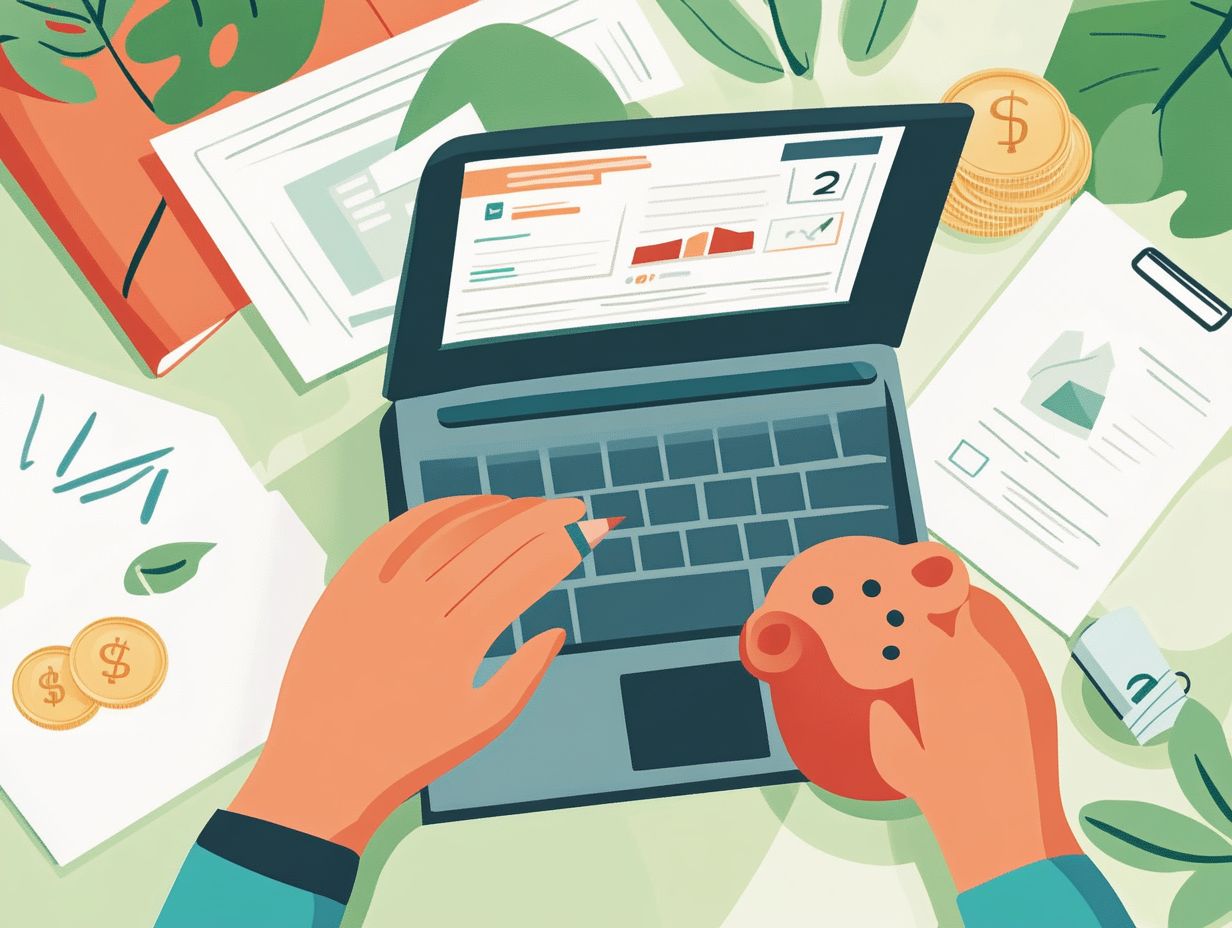
- Save at least 3-6 months’ worth of expenses. This fund brings financial security in unexpected situations.
- Review your essential expenses and consider your job security and dependents when deciding how much to save.
- Cut unnecessary costs, create a budget, and invest wisely to build your emergency fund.
The Importance of an Emergency Income Fund
An emergency fund is vital for your financial stability. It provides cash for unexpected expenses like medical bills or home repairs. This safety net protects you from financial shock and keeps your life on track during tough times.
Money experts emphasize that having an emergency fund not only protects you from the effects of inflation which means that prices go up over time but also enables you to pursue your financial goals with confidence, free from the anxiety of unexpected costs draining your resources.
Why You Need One and How it Can Help
An emergency fund is essential for maintaining your financial stability. It acts as a cash reserve that allows you to handle unexpected expenses without jeopardizing your overall financial health.
This safety net reduces the pressure to use credit cards or personal loans during emergencies like medical bills or job loss.
By building your emergency fund, you’ll effortlessly cover these expenses and avoid spiraling debt and high interest rates.
Financial experts recommend saving enough to cover three to six months of essential expenses. This prepares you for money troubles while also supporting your long-term financial goals.
Determining How Much to Save
Determining the ideal amount to save for your emergency fund is crucial for ensuring your financial security. Experts typically suggest that you set aside funds equivalent to three to six months of essential expenses, all tailored to your unique circumstances and financial goals.
Start building your emergency fund today for a secure tomorrow!
Calculating Your Necessary Expenses
Calculating your necessary expenses is the first step in building your emergency fund. This involves tracking all essential costs like housing, transportation, and healthcare.
By identifying essential and non-essential expenses, you gain a clearer financial picture. Essential costs include unavoidable items like rent or mortgage payments, utility bills, and medical expenses.
Non-essential expenses, on the other hand, are things like dining out, subscription services, and luxury items that can be cut from your budget.
To make budgeting easier, consider using helpful tools like Mint or YNAB (You Need A Budget). These apps help you track spending patterns and categorize expenses.
A money market account is another option for your savings, typically offering higher interest rates. This way, you can visualize your spending and make it easier to focus on building your emergency fund.
Factors to Consider
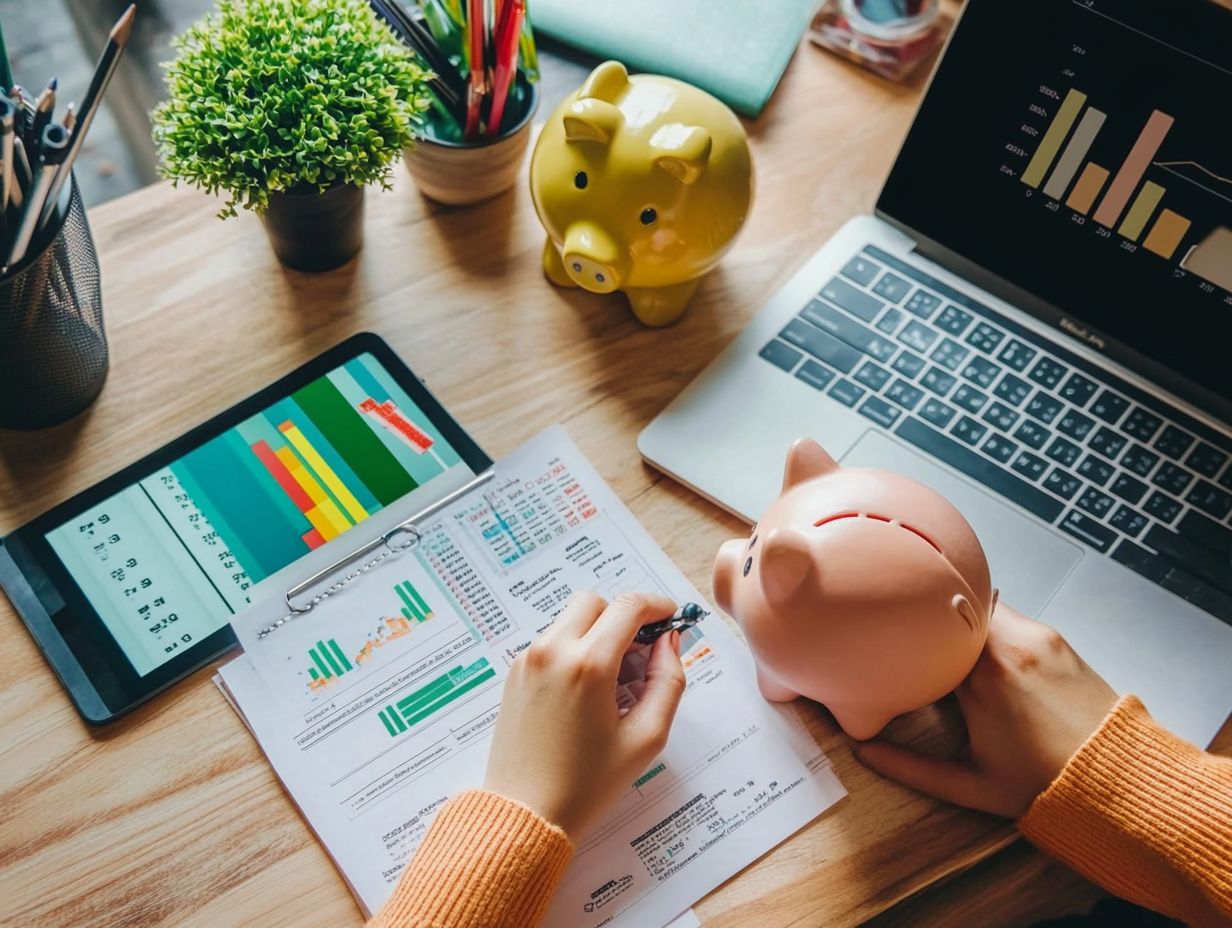
When determining how much to save for your emergency fund, several key factors deserve your attention. Consider your current financial stability, the potential impact of inflation, and the risks associated with income loss due to unforeseen circumstances.
Your personal circumstances influence your savings goals. Factors such as family size, health, and existing debts all play a significant role. Job security is another critical aspect to evaluate; if you re in stable employment, you might feel comfortable with a smaller safety net. However, freelancers or those in unpredictable industries may need a more substantial cushion to navigate potential financial shocks.
Lifestyle choices also influence your strategy. For instance, if you re living paycheck to paycheck, your approach will differ significantly from someone with a more secure financial background. Reflecting on these elements will help you assess your unique situation and better prepare for potential financial shocks, such as unexpected car repairs or medical bills.
Strategies for Building an Emergency Income Fund
Building an emergency income fund requires a strong savings strategy. Start setting up automatic transfers and allocate a portion of your income to a high-yield savings account a type of bank account that earns a higher interest rate than a standard savings account or a money market account. This approach will help you grow your emergency fund over time, ensuring you avoid any financial strain. Start growing your emergency fund today and secure your financial future!
Tips for Saving and Budgeting
Effective budgeting is crucial for building your emergency fund. It allows you to allocate resources wisely while prioritizing your financial well-being.
By crafting a clear financial plan, you can pinpoint essential expenses and identify potential areas for adjustments. This helps in developing better spending habits.
Setting specific savings goals like an incremental increase each month enables you to witness your progress over time. Regularly reviewing and adjusting your plan fosters a proactive stance against unexpected costs or emergencies.
This leads to a heightened sense of peace of mind while safeguarding against financial crises.
Investment Options
When you’re building an emergency income fund, consider investment options like high-yield savings accounts or money market accounts. These options can greatly enhance your financial security and growth potential, allowing your cash reserve to work for you.
These accounts usually offer higher interest rates compared to traditional savings options. This allows you to grow your funds more rapidly while keeping that essential liquidity (having cash available for emergencies) handy during unexpected financial emergencies.
Certificates of Deposit (CDs) are also an option. They are savings accounts that lock your money for a fixed time for a higher interest rate, but be cautious, as they may limit your immediate access to cash.
By balancing these choices, you can ensure that your emergency fund not only stays secure but also works diligently for you. This strategy ultimately gives you quick access to cash without sacrificing earning potential, especially in times of financial crisis.
Maintaining and Using Your Emergency Income Fund
Once you have established your emergency income fund, managing it wisely is your ticket to financial peace of mind. This practice is crucial for securing your ongoing financial stability, especially during financial emergencies when unexpected expenses may surface.
Best Practices for Managing Your Fund
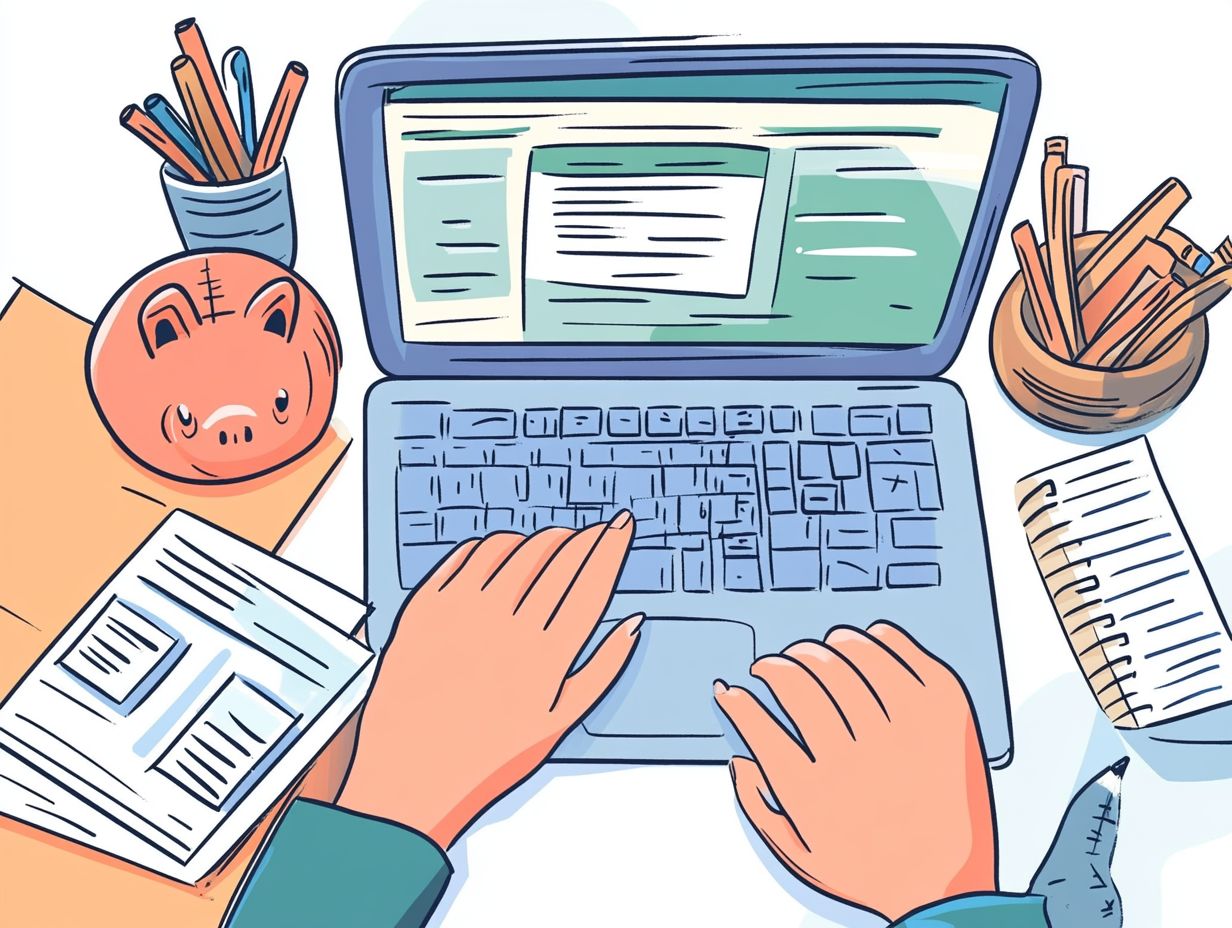
Managing your emergency fund effectively involves regularly reviewing your financial situation to ensure your cash reserve is adequate for your evolving needs. This means taking a moment to assess any changes in your income, expenses, or financial goals that could impact how much you ve saved.
By doing this, you can figure out if your current fund is sufficient to handle unforeseen events like medical emergencies or job loss, preventing reliance on credit cards or personal loans. Additionally, learning how to manage income during crisis can further enhance your financial preparedness.
Keep these funds in an account that is easily accessible and earns interest, such as a high-yield savings account, which allows for growth while keeping your liquidity intact. By implementing these strategies, you can boost your financial security and respond confidently to unexpected challenges.
When and How to Use Your Fund
Understanding when and how to utilize your emergency fund is crucial; it should primarily act as a safety net for your finances during unexpected expenses or financial shocks, safeguarding your long-term financial goals.
This financial cushion becomes particularly essential when unexpected events happen—think sudden medical emergencies, urgent home repairs, or even job loss. Accessing your emergency fund can prevent you from plunging into debt or derailing your carefully crafted financial plans. Learning how to build an emergency fund is a crucial step in securing your financial future.
It’s vital to reserve this fund for genuine emergencies, steering clear of impulsive purchases or non-urgent financial needs. By developing a clear strategy regarding what expenses qualify, such as medical bills or home repairs, you can ensure that your fund remains intact. For more guidance, consider learning how to save for emergencies, offering true peace of mind during turbulent times.
Frequently Asked Questions
What is an emergency fund and why is it important to have one?

An emergency fund is a savings account specifically designated for unplanned expenses or financial emergencies. It is important to have one as it provides a safety net and can prevent you from going into debt in case of an emergency, enhancing your financial stability.
How much money should I have in my emergency fund?
The general rule of thumb is to have enough money to cover three to six months of essential expenses. However, this amount may vary depending on your individual circumstances such as income stability, job security, and family size.
Start building your fund today to ensure peace of mind!
What are some tips for building an emergency income fund?
Start small. Set achievable goals to save a specific amount each month.
Cut back on unnecessary expenses. Consider picking up a side job or freelance work to boost your income.
Set up automatic savings by directing a portion of your paycheck into your fund.
Where should I keep my emergency income fund?
Your emergency fund should be easily accessible but not too easy to discourage impulsive spending.
A good option is a high-yield savings account, which earns more interest than regular ones, helping your money grow.
When should I use my emergency income fund?
Only use this fund for unexpected expenses like job loss, medical bills, or major repairs.
Don t use it for everyday expenses or non-emergencies, like credit card payments.
What should I do if I have to use my emergency income fund?
If you need to tap into your fund, replenish it as soon as you can. Adjust your budget to help rebuild your savings.
Reassess your target amount to ensure it covers future unexpected costs effectively.



